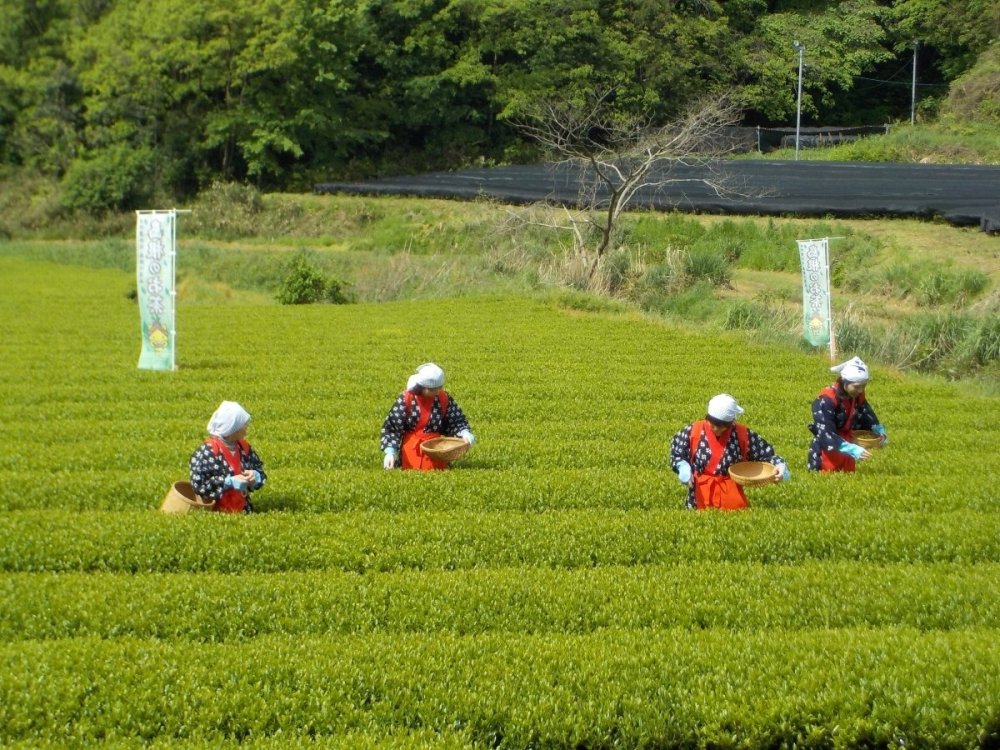
From Leaf to Latte: The Journey of High-Quality Matcha (How it is made)
Ever wonder how matcha gets its vibrant colour and unique flavour? Explore the meticulous process of matcha production in Japan, from shade-growing to stone-grinding. Learn why quality matters for Aussie matcha lovers in Melbourne, Sydney, Brisbane & beyond.
G'day, fellow matcha enthusiasts! Ever sip a perfectly whisked bowl of vibrant green matcha and wonder, "How does this incredible powder even come to be?" It's not just ground-up green tea leaves; the journey from the tea fields of Japan to your cup in Australia is a fascinating blend of tradition, meticulous care, and skillful craft.
Understanding this process helps you appreciate why high-quality matcha tastes so unique and why choosing premium, organic options makes a real difference to your daily ritual, whether you're in Melbourne, Sydney, Brisbane, or anywhere across Oz. Let's trace the journey of matcha from the very beginning.
Step 1: Cultivation – Nurturing Nature's Best
It all starts in the serene tea fields of Japan.
- Selecting the Right Plants: Not just any tea plant will do! Specific cultivars (varieties) of the Camellia sinensis plant are chosen for their suitability for matcha production. Cultivars like Gyokuro, Samidori, and Okumidori are often favoured for their ability to produce leaves rich in flavour and nutrients when grown correctly.
-
The Magic of Shade-Growing: This is arguably the most crucial step defining matcha. About 3-4 weeks before harvest, the chosen tea plants are carefully covered, traditionally with bamboo mats or modern netting, to significantly reduce their exposure to direct sunlight. This shading stresses the plant in a good way! It forces the leaves to produce higher levels of:
- Chlorophyll: Giving matcha its signature vibrant, electric green colour. Learn more about chlorophyll here.
- L-Theanine: An amazing amino acid responsible for matcha's unique "umami" (savory) taste and its renowned ability to promote a state of calm alertness and focus. Discover the benefits of L-Theanine. Shading results in leaves that are thinner, softer, and packed with flavour compounds.
- Meticulous Hand-Harvesting: For the highest quality matcha (especially Ceremonial Grade), only the youngest, most tender leaves and buds at the top of the plant are carefully plucked by hand. This selective harvesting ensures only the best raw material makes it to the next stage.
Step 2: Leaf Processing – Crafting the Tencha
Once harvested, the precious leaves undergo immediate processing to preserve their unique qualities. This processed leaf, before grinding, is called "Tencha".
- Steaming (Stopping Oxidation): Within hours of picking, the leaves are briefly steamed. This critical step halts the natural oxidation process (the same process that turns leaves brown for black tea). Steaming locks in the vibrant green colour, fresh vegetal aroma, and vital nutrients. You can read about tea processing and oxidation here.
- Drying: The steamed leaves are then gently dried, often in large cages with heated air circulating through them. This reduces the moisture content significantly, making the leaves brittle and preserving them for the next stages.
- Destemming and Deveining: This is pure dedication! The dried leaves are meticulously sorted to remove all stems, stalks, and veins. Only the pure leaf flesh – the Tencha – remains. This labour-intensive step is vital for achieving the ultra-fine, smooth texture of premium matcha and avoiding any bitterness from the stems.
- Stone Grinding (The Traditional Heart): This is where Tencha transforms into matcha. Traditionally, the Tencha is slowly ground between specially carved granite stone mills (ishi-usu). This process is incredibly slow – it can take up to an hour to grind just 30-40 grams of matcha! The slow speed and friction generate minimal heat, which is crucial for preserving matcha's delicate flavour, vibrant colour, and nutritional profile. This traditional method is revered for producing the finest quality, especially for ceremonial grades.
Step 3: Grading – Assessing the Quality
After the painstaking grinding process, the resulting matcha powder is carefully assessed and graded by experienced tea sommeliers.
-
Sensory Evaluation: Experts evaluate the matcha based on several key factors:
- Colour: Looking for a vibrant, deep, almost electric green. Dull or yellowish tones indicate lower quality or age.
- Taste: Assessing the balance of sweetness, umami, and any potential bitterness or astringency. High grades have prominent sweetness and umami.
- Aroma: Evaluating the fresh, sweet, vegetal fragrance.
- Texture: Feeling the fineness and smoothness of the powder.
-
Assigning the Grade: Based on this rigorous evaluation, the matcha is assigned its grade. The main distinction relevant to consumers is:
- Ceremonial Grade: The highest quality, made from the best Tencha (first harvest, perfectly processed), suitable for traditional preparation (whisked with water only). It boasts the most vibrant colour, finest texture, and sweetest, most complex flavour profile.
- Culinary Grade: Still good quality matcha, but often made from later harvests or slightly different processing. It has a bolder flavour, making it suitable for lattes, smoothies, baking, and cooking where it will be mixed with other ingredients.
Unlocking the Flavour: Preparation Matters!
Even the best matcha needs proper preparation to shine! The way it's prepared significantly impacts the final taste. Key factors include:
- Water Temperature: This is crucial! Use water that's hot but not boiling – ideally between 70°C and 80°C (160°F - 175°F). Water that's too hot will scorch the delicate matcha powder, resulting in an unpleasant bitter taste. Using a thermometer or letting boiled water cool for a few minutes is recommended.
- Amount of Matcha: A standard serving for Usucha (thin tea) is typically 1.5-2 grams (about 1/2 to 1 teaspoon, often measured with a traditional bamboo scoop called a chashaku) per 60-80ml of water. Adjust to your preference, but starting here is good.
- Whisking Method: Using a traditional bamboo whisk (chasen) isn't just for show! Its many fine prongs are designed to effectively suspend the matcha powder in the water (matcha doesn't dissolve, it suspends) and create a smooth, frothy layer. Whisk vigorously in a 'W' or 'M' motion, not circular, until a fine foam appears (about 20-30 seconds). See a guide on how to whisk matcha here.
- Sifting: For the smoothest, clump-free experience, especially with Ceremonial Grade, sifting the matcha powder through a fine mesh sieve before adding water is highly recommended.
From Field to Froth: Appreciating the Journey
So, the next time you enjoy a delicious matcha latte in your favourite Melbourne cafe, whisk up a traditional bowl in your Sydney kitchen, add a vibrant boost to your Brisbane smoothie, or savour it anywhere else in Australia, take a moment to appreciate the incredible journey that powder has taken. From the careful shading and harvesting in Japan to the meticulous steaming, drying, and slow stone-grinding, every step contributes to the final colour, flavour, and quality. Understanding this process helps Aussie matcha lovers choose wisely and truly savour the experience of premium, well-crafted matcha. Check out our premium matcha portfolio to make a jumpstart to your matcha experience.


0 comments